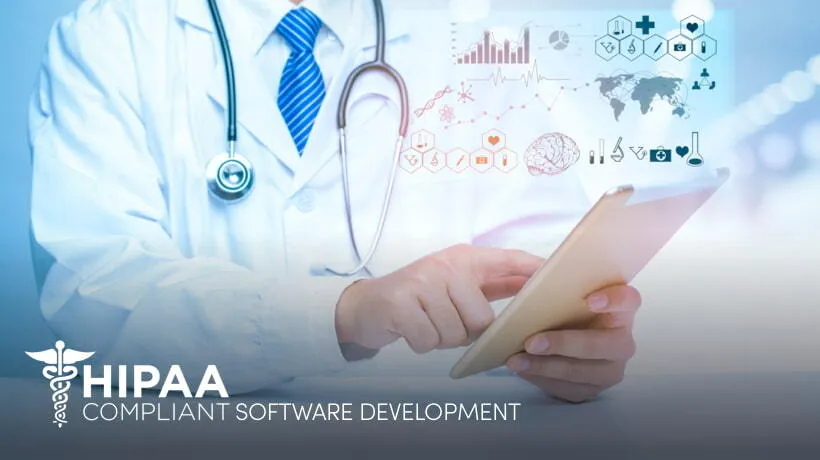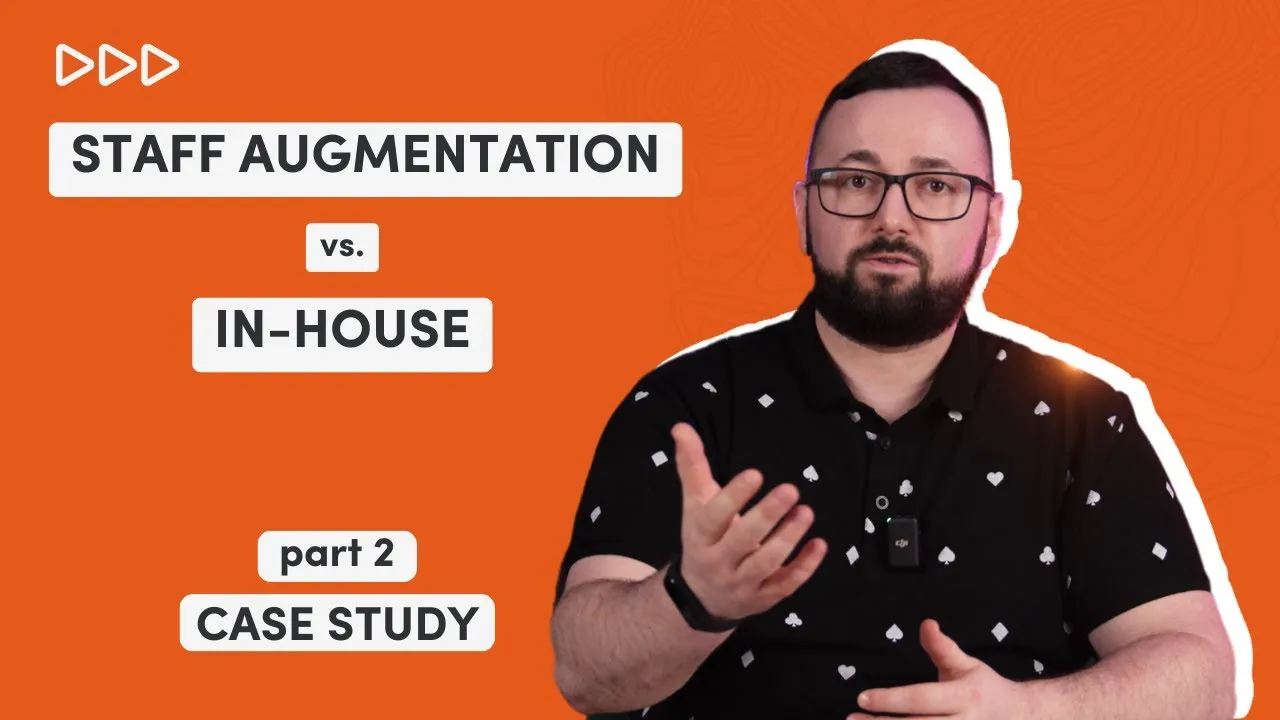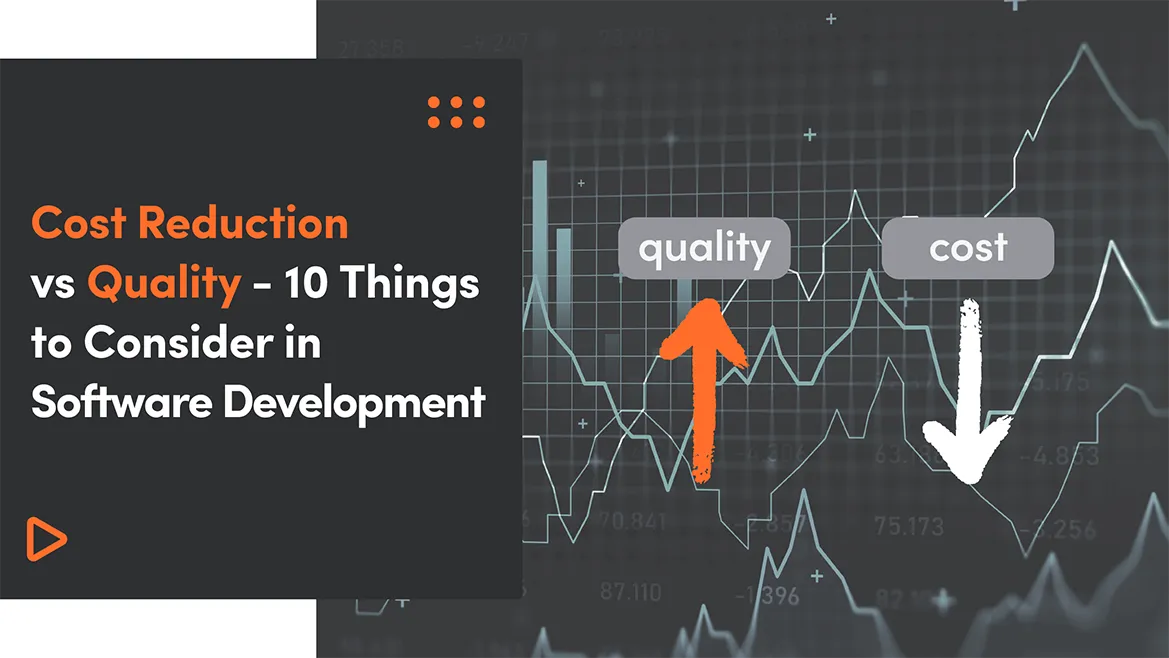Healthcare data breaches have been rampant over the last decade. In just a few years, the world has witnessed over 2,550 data breaches, with millions of records being compromised. Thankfully, amongst the biggest data breaches, healthcare is nowhere to be seen. The nature of the data that's stolen due to a breach, makes them considerably more severe than others.
By the end of 2020, it’s expected that security breaches could cost $6 trillion to the healthcare industry. But why do these data breaches occur? Well, the primary reasons include data theft, improper disposal and handling of data, unauthorized access, disclosure of data to third parties, the involvement of outsiders, and hackling.
There can be numerous and dangerous outcomes of these data breaches. In some instances, it can be life-threatening too. Is there a way to deal with it? If so, what is it?
Well, the answer is HIPAA. What is HIPAA? And how it protects the healthcare industry from data breaches? In this article, you will learn about HIPAA and its guidelines. You will also get to know how to make custom Software HIPAA Compliant.
- Step #1: Analyze and Self-Audit
- Step #2: Create and Execute Remediation Plans
- Step #3: Appoint a HIPAA Compliance, Privacy and Security Officer and Train Employees
- Step #4: Prepare the Secure Documentation Management
- Step #5: Agreement Management with HIPAA Compliant Healthcare Software Development Company
- Step #6: The System Efficiently via Incident Management
What is HIPAA?
CDC (Centers for Disease Control and Prevention) explains HIPAA as:
The Health Insurance Portability and Accountability Act of 1996 (HIPAA) is a federal law that required the creation of national standards to protect sensitive patient health information from being disclosed without the patient’s consent or knowledge. The US Department of Health and Human Services (HHS) issued the HIPAA Privacy Rule to implement HIPAA requirements. The HIPAA Security Rule protects a subset of information covered by the Privacy Rule.
Healthcare institutes that deal with patients’ protected health information (PHI) MUST follow the HIPAA compliance through strict security measures. Anyone who is treating the patient, dealing with patient’s payments, operations in the healthcare institute, along with the business associated with access to patient records, or assists treatment, payment or services, must meet the HIPAA compliance. Even the contractors and subcontractors or any business associate with healthcare organizations must also follow HIPAA compliance.
What are the Requirements of HIPAA Compliance?
Every entity associated with the healthcare business with access to a patient’s Personal Health Information must ensure the data’s administrative, technical, and physical safeguard. HIPAA has specific requirements that address the guidelines to follow for the security of PHI. In case of a breach, an investigation takes place to identify the cause of the breach. These requirements are further explained below:
The HIPAA Privacy Rule
The HIPAA Privacy Rule was enacted in 2003. It applies to all healthcare institutes, healthcare providers of healthcare plans (including employers), healthcare clearinghouses, and all business associates with the healthcare industry. The Privacy Rule sets limits and conditions to the use and disclosure of PHI. The law gives the patient full right over their health information, including the right to obtain a copy of their PHI and change or update it, if required.
Every healthcare organization is bound to respond to the request within 30 days. Proper consent should be taken from patients through 'Notices of Privacy Practices' (NPPs) in circumstances under which their data will be used or disclosed to outsiders.
The entities should also provide proper training to employees to ensure that they are aware of the Privacy Rules and follow them religiously.
The entities should ensure that appropriate steps are taken to maintain PHI's integrity and patients’ identifiers.
To read the HIPAA Privacy Rules' full content, you can visit the Department of Health & Human Services website.
The HIPAA Security Rule
The HIPAA Security rules stated that the Patient’s Personal Health Information should be safeguarded and protected at rest or in transit. No matter how the information is collected,be it electronically created, accessed, processed, or stored, it should remain secure. The rule applies to anybody or any system that has access to confidential patient data. In this rule, ‘Access’ is interpreted as the means necessary to read, write, modify, or communicate ePHI of any individual.
The rule has three parts:
Technical Safeguards
The Technical Safeguard deals with the technology involved in creating, accessing, and storing individual’s ePHI. The law says that ePHI, whether at rest or in transit, must be encrypted to NIST Standards.
Physical Safeguards
The Physical Safeguards address the physical security measure of the ePHI regardless of their location. The location can be a remote data center or a cloud or a server deployed on the HIPAA Covered entity's premises.
Administrative Safeguards
The Administrative Safeguards address the policies and procedures involved in bringing the Privacy Rule and Security Rule together. The law states that a Privacy Officer and a Security Officer should be hired and trained to put the guidelines in place to protect ePHI.
An Office for Civil Rights (OCR) pilot audit is usually conducted periodically to identify the risk assessment. The audit ensures that the organization is in compliance with HIPAA rules and strictly following them. A HIPAA compliant risk assessment is not a one-time requirement, but a regular task necessary to ensure continued HIPAA compliance.
The HIPAA Enforcement Rule
The Enforcement Rule addresses the penalties that could be imposed on involved entities responsible for an avoidable breach. All the covered entities should be well aware of the consequences, as they might face heavy penalties if anything happens to the ePHI. The details of the penalties are as follow:
- A violation of HIPAA due to the ignorance of its guidelines has a fine of $100 to $50,000.
- A violation that occurred despite reasonable vigilance has a fine of $1,000 to $50,000.
- A violation due to willful neglect has a fine of $10,000 to $50,000.
- A violation due to willful neglect, which is not corrected within thirty days, will be charged for $50,000.
- A maximum penalty amount of $1.5 million for all violations of an identical provision.
The penalties are imposed per violation and the risk posed by the breach to the individual. These penalties can easily go up to $1,500,000 per year, per violation. Do keep this in mind that willful negligence by the covered entities that cause a breach can also result in criminal charges, and affected individuals can file a lawsuit in a Civil Court.
The Breach Notification Rule
The Breach Notification Rule states that covered entities should inform the patients of a breach of the Personal Health Information. The rule also requires the covered entities to promptly notify the Department of Health and Human Services about the breach. The organization is bound to issue a notice to the media if the breach affects more than five hundred patients. If the breach is said to affect less than 500 people, it should be reported via an OCR web portal. The Breach Notification Rule has some guidelines to follow; in case of any breach, the entity should issue a notice containing the following information:
- The nature of the Electronic Protected Health Information is compromised.
- The unauthorized person who accessed or used the PHI or to whom the disclosure was made if identified.
- Whether the PHI was acquired or viewed if identified.
- The extent to which the risk of damage has been mitigated.
The entity must issue a notification within 60 days of the discovery of a breach. The entity should also inform the patient about the steps they should take to keep themselves safe from any harm due to the breach.
The Omnibus Rule
The Omnibus Rule was introduced to address all other areas which have not been covered in the previous rules. The rule states the details about amended definitions, clarified procedures, compliance policies, and expands the HIPAA checklist to cover associated contractors and subcontractors of a healthcare organization.
Contractors and Subcontractors are classified as ‘Business Associates’ who are involved in creating, receiving, maintaining, or transmitting PHI in the course of performing functions on behalf of the business.
The term ‘Business Associates’ covers contractors, consultants, health equipment manufacturers, data storage companies, and any business engaged with the healthcare organization.
The five key areas of Omnibus Rules are:
- Introduction of the final amendments as required under the HITECH Act.
- Incorporation of the increased, tiered civil money penalty structure as required by HITECH.
- Introduced changes to the harm threshold and included the final rule on Breach Notification for Unsecured ePHI under the HITECH Act.
- Modification of HIPAA to include the provisions made by the Genetic Information Nondiscrimination Act (GINA) to prohibit the disclosure of genetic information for underwriting purposes.
- Prevented the use of PHI and personal identifiers for marketing purposes.
This is it for the HIPAA Rules. Now, let’s discuss how an organization can become HIPAA Compliant.
How can You Become HIPAA Compliant?
To become a HIPAA compliant, you need to fulfil some requirements. We have prepared a detailed draft of all the requirements given below:
Step #1: Analyze and Self-Audit
HIPAA Compliance Rules are imposed on healthcare organizations or any associated business. All covered entities should conduct a regular audit to ensure HIPAA Compliance. Custom software should provide the covered entities with a comprehensive and detailed report of their compliance level.
Self-audit is one of the best ways to generate an excellent in-depth analysis of the organization, its associated business, and risk management.
Step #2: Create and Execute Remediation Plans
Self-audit will provide you with a clear image of the vulnerabilities in your compliance. Once you identify the flaws, you need to develop an effective plan to deal with the shortfalls. The planning you will do to cover-up the vulnerabilities is called ‘Redemption Plan’.
The custom software you are planning to create should have the ability to create, execute, and monitor the redemption plan from self-audit reports.
Step #3: Appoint a HIPAA Compliance, Privacy and Security Officer and Train Employees
According to the rules of HIPAA compliance, you need to hire a Security and Privacy Compliance officer. Once your redemption plan is in hand, you need to take measures to avoid any human error. Custom policies and procedures should be designed, and all employees should be trained accordingly. These procedures and strategies will help you bridge the gap in your company.
Your customer, HIPAA compliant software program, should contain effective employee training programs. The training will help your staff become aware of cyber threats, the possible consequences of data breaches, and how they can ensure additional PHI security.
Step #4: Prepare the Secure Documentation Management
HIPAA Compliant software must have secure storage and structured documentation management. The software should provide easy to store documents and make caregivers entirely ready for any unexpected audit. The reliably stored information is perfect proof (and practice) of HIPAA compliance for years to come.
Step #5: Agreement Management with HIPAA Compliant Healthcare Software Development Company
According to the Omnibus Rule, caregivers must have a Business Associate Agreement (BAAs) who are hired to handle ePHI. This is why a custom HIPAA compliant software should have the option to manage and allow the signing of BAAs whenever needed.
Step #6: The System Efficiently via Incident Management
Disclosing PHI poses a greater threat to caregivers as well as patients. An open laptop is like a broken safe, which can lead to financial damages. HIPAA Compliant software should handle incident management for you by recording and analyzing the incidents. If the system fails to analyze the vulnerability and a breach happens, it means the error should be identified to avoid such happening from recurring. Moreover, the software must also automatically report the case to OCR when a breach occurs.
What is HIPAA Compliance Checklist for Healthcare Software Development?
The core features that will make your custom software program HIPAA Complaint are as follows:
Admin Access Control
HIPAA Compliant software should have admin access control. Only an admin can authorize the access of the software to the users. The roles, responsibilities, and limitations of access should also be assigned at the initial stage while authorizing the user. All HIPAA covered entities should follow the security measure religiously.
User Authorization
An admin should first verify the user before granting them access to the software. Proper password and identity verification should be integrated into the software for user authorization. Ensure HIPAA training and staff member attestation of HIPAA policies and procedures are documented before authorizing access to the software.
Authorization Monitoring
There should be a proper monitoring process of authorization. HIPAA also requires that a user only sees the “minimum necessary information” to do their job. For example, a doctor should be authorized to see more health information, whereas a receptionist should have access to very limited information. Accordingly, you need to create levels of authorization, in which the software only provides as much information as each person needs to do the job.
Data Backup
Minimize the data that you are presenting, accessing, or storing. Do not collect any information unless it is needed. For instance, there is no reason to ask for date-of-birth from every patient. You should have defined purposes for the ePHI you collect.One of the best ways to reduce the risk of a breach is not to store sensitive data.
Whenever you do not need to store protected health information, do not do it. There should be a proper privacy policy defined to take a backup of the data. The software should take a backup only of least risky information, either on a server deployed at HIPAA covered business or an encrypted cloud.
Remediation Plan
A Redemption Plan is created after a self-audit that defines the steps to avoid risk. A proper redemption plan should be created and integrated into the custom HIPAA compliant software. The plan should be properly documented. Then ensure to put the ideas into action, review annually, and update as necessary. The Privacy and Security Officers should keep a constant check and ensure the proper execution of the redemption plan.
Emergency Mode
There may be some situations where an employee will need to access patients' all information in an emergency. Regardless of the levels of authorization we have created earlier, such cases occur in healthcare. For this reason, an “Override” option should be integrated into the custom HIPAA Compliant software, which allows the person to access all the information of a patient. This can also be called “Emergency Mode.”
Automatic Log Off
The software should have an option to log off the user after a particular time of inactivity. For example, if the user has not performed any activity in one minute, the software will be automatically logged out.
Data Encryption
The protection of a patient's personal information depends highly on the security of your network. All the data stored or in transit should be encrypted using robust tools and encryption protocols.
What to Keep in Mind While Making Your Custom Healthcare Software HIPAA-Compliant?
HIPAA Complaint has clear ground rules and guidelines. Following are some pointers you should keep in mind while building a custom healthcare HIPAA Compliant software.
Defined the Roles for Users
Your software architecture should have clear and defined roles and responsibilities for users. Make sure that the data is only available to authorized users and it is disposed of with complete safety.
Minimum Risk and Exposure
The use and sharing of PHI should be limited to authorized access only. Make sure that no unauthorized access can view or store the data. Avoid using any form of cache for ePHI. There should be provision for secure data storage and transmission on the cloud. It means that data collected and stored on the cloud should be HIPAA compliant too.
Secure Data Transmission and Storage
HIPAA Compliant software should be protected with strong encryption. You need to make sure that reliable protocols, such as TLS/SSL, IPsec, SSH, and PGP are used to encrypt the data stored and transmitted through the software.
Constantly Validated Security
All security measures should be implemented in the software such as:
- After a certain time of inactivity, software should log out automatically
- Push notifications should not contain any PHI
- PHI should not be stored in backups and highly vulnerable log files, especially while using SD cards in Android devices
Conclusion
Due to heavy penalties for HIPAA Compliance violations, healthcare organizations are aggressively investing in implementing a fully integrated IT system following HIPAA rules. The market for custom HIPAA Compliance software is growing, and many businesses have entered into this market. Keeping this in mind, HIPAA software developers need to stay updated for the new amendments in the HIPAA law. It will also help them to reduce the cost of IT management solutions to offer to the organizations.
If you are in the healthcare industry and looking to build a custom HIPAA compliant software, you need to consult a specialist. At Selleo, we have a team of experts who can help you at every step. Contact us for more details.




